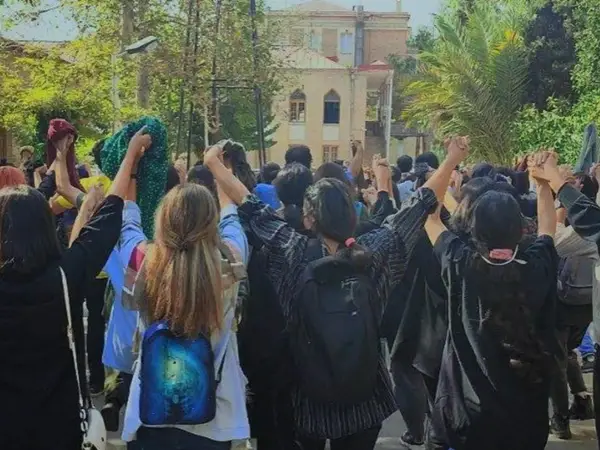The Iranian government has beefed up security at universities to prevent demonstrations, but protest and civil disobedience continue by a defiant generation.
In a latest move, officials at Sharif University in Tehran have expelled students who have been at the forefront of protests.
“A number of students who have played a key role in stirring up unrest at university have been temporarily banned from attending the courses,” Sharif university said in an announcement.
They also stated that the canteen of the university would be closed until further notice to uphold gender segregation and prevent mixed dining by male and female students, which has become an act of civil disobedience by students.
Reports say up to now 33 students have been banned from entering Sharif university.
On Sunday, the plainclothes Basiji forces of Sharif University closed the doors of the canteen and placed tables and chairs behind it, blocking students from entering, but the students broke the doors and expelled the Basijis and ate together.
Avant-Garde Student Movement
Since the beginning of the protest movement in mid-September, university students have opened a new chapter of their struggle against the clerical regime with the modern slogan of “Women, Life, Liberty”.
Female students wave their headscarves in the air or stand in front of security forces without their mandatory hijab.
Perseverance and resistance of the students clearly shows that the repressive approach by the government will not work in against this generation born after 2000. Even if the clerical regime can silence their voices for a few days, it cannot stop their fundamental demands.
Students are sending a message to people across the country that the university as a civil institution is still dynamic and alive, despite the policy of expulsion, censorship, and efforts to depoliticize the university.
The dynamism and political awakening also send a clear message to government that students will not remain silent despite repression.
History of Academic Movements in Iran
To reach this point, the university and students experienced many ups and downs during the past three decades. Their movement has been interrupted sometimes due to repression, but it has never been stopped.
In 1999, a student uprising stunned the Iranian capital Tehran for five days. Students objecting to the shutdown of Salam Daily held protests in a struggle for freedom. Between July 8 and 13, the hardliners cracked down on student killing four and injuring nearly 200.
During the following few years many students preferred to leave the country in a dramatic brain drain.
In 2009, the universities were affected by a controversial presidential election. With the formation of the Green Movement and the slogan of “Give back my vote”, students once again took to the streets to protest vote rigging which led to re-election of Mahmoud Ahmadinejad as president.
Protests lasted all through the fall of 2009 and hundreds of students were arrested and tortured in prisons around the country, with former inmates alleging mass rape of men, women, and children by the Islamic Revolutionary Guard in prisons such as Kahrizak and Evin. Opposition groups said at least 72were killed in the three months following the election.
Ten years later in November 2019, students once again joined the protesters who were angry over an abrupt fuel price hike. The movement, which lasted a week, gradually turned into expression of discontent over economic woes and corruption.
In the most violent and severe antigovernment unrest since the rise of Iran’s Islamic Republic in 1979, the regime shut down the internet nationwide and killed as many as 1,500 people including students.
More Widespread, Modern, Radical in 2022
Now, with nationwide protests rejecting Islamic Republic after the death of Mahsa Amini last month, students nationwide have launched a new movement to stand against the political system.
The attack of Basiji thugs and security forces on Sharif University in September provoked a wave of sympathy in other universities.
It seems this is the largest and most widespread student solidarity with public protests that has spread even to small campuses in remote areas of Iran.
